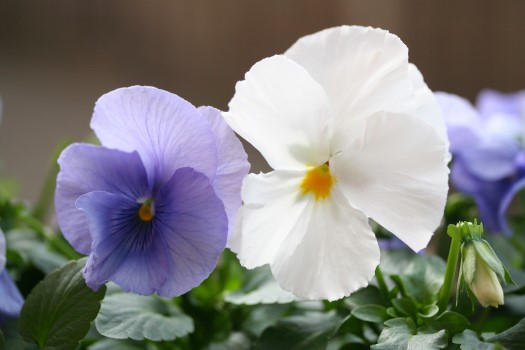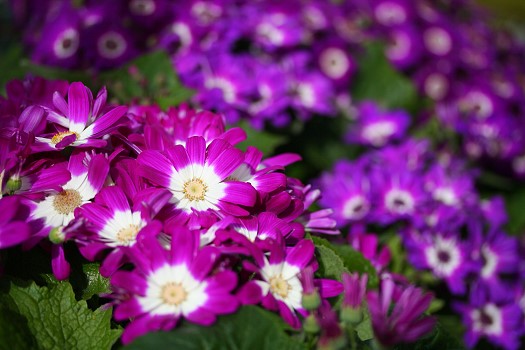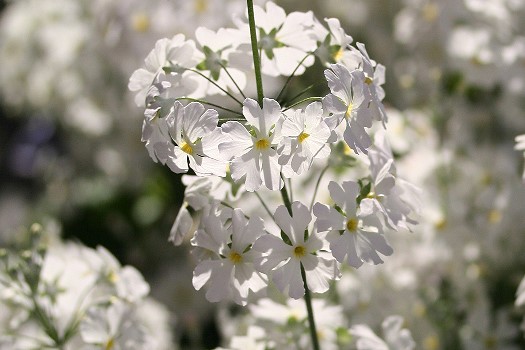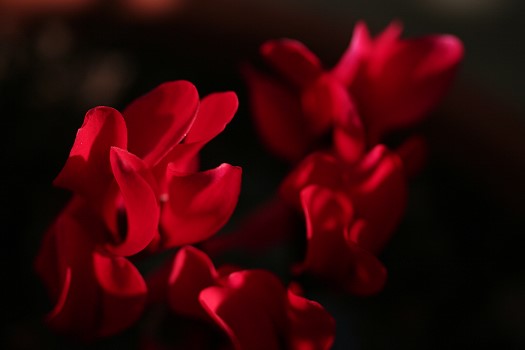Floral Colour in Winter
My balcony has been a blaze of colour this winter, courtesy of a range of bedding annuals
I live in an inner-city suburb of Melbourne and whilst that provides many advantages, space isn’t one of them. Despite having a degree in horticultural science, I only have a balcony upon which I can grow my plants. As a result, my botanical selection needs to look good and fit within a defined space. Hence I have turned to bedding annuals.
Bedding plants aren’t popular like they used to be. I believe the 13-year drought had a lot to do with this, which is a pity because regardless of their water consumption, bedding annuals put a smile on everybody‘s face, guaranteed.
Winter may seem a dull season, but it needn’t be if the correct plants are selected.
To colour my balcony (and impress my neighbours), I selected cinerarias (Pericallis ×hybrida cvs.), primulas (Primula malacoides) and pansies (Viola ×wittrockiana cvs.) which I believed would provide good colour throughout the winter months. All were planted in March and are now a spectacular blaze of colour.
My balcony has an easterly aspect, and so receives direct sun for about 50% of the day. All of my plants were grown in planter boxes containing fresh Debco Premium potting mix. One shouldn’t recycle old potting mix (there’s a risk of pathogen spread) and buying cheaper products that don’t meet the Australian Standard will lead to disappointment.
The first of my three seedling species to flower were the pansies. I bought an extremely cheap punnet of mixed colours from Bunning’s Warehouse but as it happened, the buds only emerged with either pale blue or white. Whilst it looks lovely, it wasn’t what I had in mind!

Pansies grow to about 20 centimetres in height and width. The key to keeping them looking good (and producing more blooms) is to remove any spent flowers as soon as they’re spotted. That way, the plant will be encouraged to produce more blooms and there won’t be a visual blemish from withered flowers.
The most spectacular of my blooms are the cinerarias, although these were the last to emerge. Unlike pansies which constantly produce new flowers, cinerarias develop one large inflorescence of blooms which are available in white through to pinks, purples and blues. Just as I did for the pansies, I bought a cheap punnet of mixed seedlings and got blues and pinks.

My cinerarias stand about 30 centimetres high and look stunning. Unfortunately they proved to be extremely popular with a range of caterpillar species and whilst I chose to physically remove the caterpillars (with a limited degree of success), the best remedy for them is actually an application of Dipel®. This is an organic product containing the bacterium Bacillus thuringiensis which is poisonous only to caterpillars, so it provides an excellent natural remedy that doesn’t rely on chemicals or harm anything else.

Fortunately the caterpillars have left the flowers well alone. The blooms are now so large that the leaves are difficult to see anyway. That said, I can see a lot of caterpillar poo on the pavement below, so there must be more of them in there somewhere!

Perhaps the most delicate but plentiful blooms I have enjoyed are those of the primulas. Primulas are normally available in pinks and white, but I chose a selection of all-white seedlings which I felt would compliment the bright colours of the pansies and cinerarias.

Primula malacoides produces upright inflorescences containing whorls of small blooms in horizontal arrays. Each plant has foliage to about 15cm in height and flowers to 30cm with each plant producing multiple inflorescences. Planted in a cluster, they look amazing with a gentle breeze blowing through them!

In addition to my bedding annuals, I also have some dwarf cyclamen growing. I especially like this fiery red one:

Along with my green rose (now in a semi-dormant state), azaleas, cycad and various species of Thomasia, my balcony is quite a sight to see. Whilst it is very tempting to put up a photo of the whole display, I shall refrain for privacy reasons but I can say that I have seen numerous people stop and admire the plants, which is immensely satisfying.
Satisfying too is being able to sit at my table and look across at the colourful display with a latte in one hand and book in the other. But only if the winter weather is warm enough!
When these plants have finished in September, it will be time to plant my summer annuals. I am unsure what I will choose for this year but I have plenty of time to think about that.
Comments
5 responses to “Floral Colour in Winter”
A nice little article about the flowers you have. I had never realised some flowers bloom during winter! Also, Lovely flower photos. I especially love the Primula.
From the Melbourne Zoo to local councils, the drought was used as a reason to discontinue the planting of annual flowering plants, and as you suggest, they are missed. But I think the opportunity to reduce labour costs involved in planting annuals was jumped upon. Now we have lots of strappy things.
I agree with your assessment that an opportunity to reduce labour costs was probably just as great an incentive as the drought.
An entirely uplifting “blog” this time. Your lovely flower photos are so very colourful. No wonder the display is admired! Flowers have a way of making one feel good,and can bring pleasure whenever one sees a pretty show.
You have made the most of limited space too.
I also have a smallish garden, but gain much pleasure from it. I have had a sunny show of a little flower called Bidens, bright yellow, the numerous plants cover a good deal of the garden, and have been in bloom for several months. Each day, as the blinds go up there they are,and I start the day in happy mood.
For a horticulturist, it would be a hope for you to one day have a full sized garden to tend.
I hope you achieve this in the future, meantime you are enjoying what you have—–and that is important,
Thanks for a very agreeable read.
Inspiring whilst trying to plan for this autumn/winter!
Shall be planting some this season. Thanks.